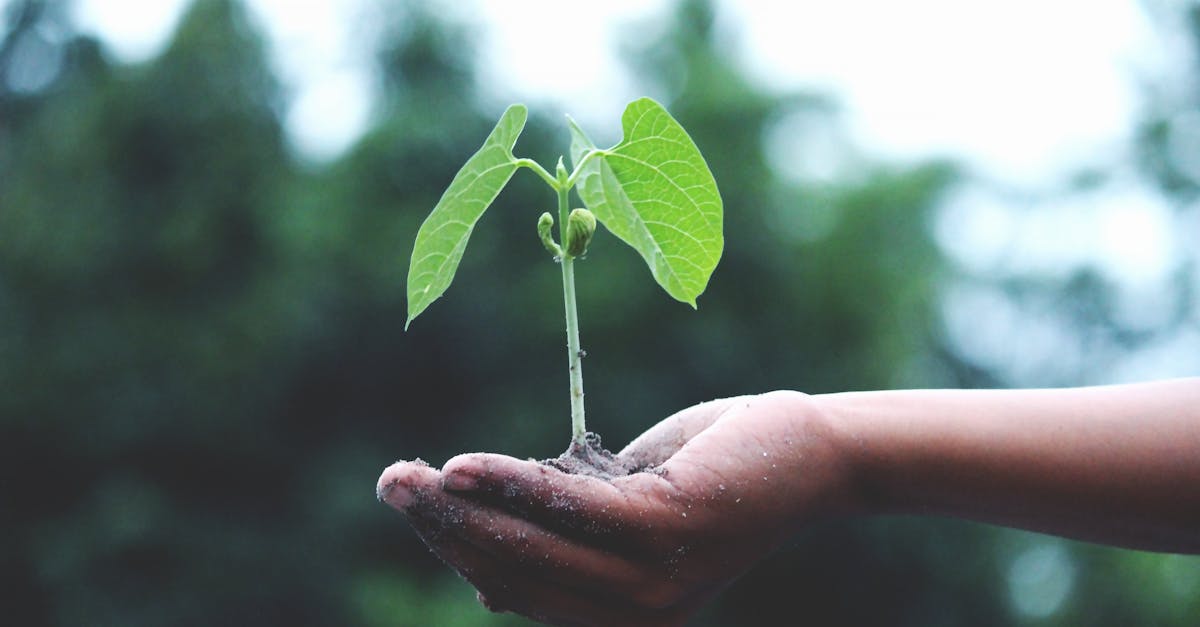Sustainable Practices: Greening Your Home Workspace for a Better Tomorrow

Working from home has become increasingly common, and with it comes a surge in waste generation from home offices. In this digital age, the reliance on paper, office supplies, and energy consumption has created a significant ecological impact. However, there is a silver lining – a plethora of practical, eco-friendly tips are available to transform our home workspaces into sustainable and environmentally conscious hubs. From choosing sustainable office supplies to embracing digital transformations, and even designing eco-friendly workspaces, there are numerous avenues to explore. This article aims to provide insights and guidance on waste reduction in home offices, offering actionable strategies and fostering a greater sense of environmental responsibility within the comfort of our own workspaces.
1. Introduction: Understanding the Impact of Waste in Home Offices
Thank you for reading this post, don't forget to subscribe!
Welcome to the world of home offices! With the rising trend of remote work, the home office has become a hub of productivity, but it has also inadvertently become a source of environmental impact due to increased waste generation. The shift towards digital work has led to a surge in paper usage, energy consumption, and the accumulation of office supplies, creating an ecological footprint within our very own homes. As we navigate this new landscape, it’s crucial to understand the implications of waste within home offices and how our everyday actions can contribute to sustainable practices for a greener future. The impact of waste in home offices is not just about the physical clutter; it’s about our responsibility to the environment, and this article aims to shed light on practical, eco-friendly tips to mitigate this impact and cultivate a more sustainable approach to remote work. In doing so, we can take proactive steps to minimize our environmental footprint and embrace a workstyle that not only enhances productivity but also prioritizes the well-being of our planet.
The Rise of Home Offices
The rise of home offices has been nothing short of remarkable, reflecting a paradigm shift in how we approach work. This trend has been accelerated by advances in technology, the need for flexibility, and the ever-growing desire for work-life balance. However, with this surge in remote work comes an unforeseen consequence – the amplification of waste generation. As more individuals embrace the convenience of working from home, there is an inclination towards increased paper usage, higher energy consumption, and a greater demand for office supplies, all contributing to a spike in waste production. It’s a natural consequence of our evolving work culture, yet one that necessitates a conscientious outlook towards sustainability.
This shift to home-based work setups has also brought to the forefront the need for a reevaluation of our environmental impact. The correlation between the rise of home offices and heightened waste generation underscores the urgency to adopt eco-friendly practices. It’s essential for individuals and organizations to recognize this correlation and proactively address the environmental implications. By acknowledging this correlation, we can collectively work towards creating a positive impact, ensuring that the convenience of remote work doesn’t come at the cost of our planet’s well-being.
As the landscape of work continues to evolve, it’s imperative to recognize that the rise of home offices signifies not just a shift in work dynamics, but a fundamental transformation in our approach to waste management. By understanding this correlation, we can work towards integrating sustainable practices seamlessly into our home office routines, subsequently mitigating the elevated waste generation and creating a healthier, eco-friendly work environment.
Environmental Consequences of Home Office Waste
As the allure of home-based workspaces continues to grow, so does the environmental impact of home office waste. The ecological effects of this waste are multifaceted and far-reaching, encompassing issues such as increased resource consumption, waste accumulation, and carbon emissions. The significance of adopting eco-friendly approaches becomes increasingly evident as we navigate the environmental consequences of home office waste. Every ream of paper, discarded office supply, and unit of energy consumed within our home offices contributes to a larger ecological footprint, one that calls for conscious attention and proactive solutions.
Delving into the ecological effects of home office waste allows us to grasp the interconnectedness between our daily work routines and environmental well-being. The desktop printers, multiple screens, and energy-consuming devices that power our home offices contribute to a collective environmental burden. Nevertheless, by recognizing these consequences, we can cultivate a heightened sense of environmental responsibility, pivoting towards greener and more sustainable practices that minimize waste and resource consumption.
The significance of adopting eco-friendly approaches lies in the potential for positive change. By understanding the gravity of the environmental consequences linked to home office waste, individuals and organizations can actively seek out solutions that prioritize sustainability. From embracing digital documentation to selecting energy-efficient devices and advocating for responsible waste management, each eco-friendly approach paves the way for a more environmentally conscious and sustainable home office environment.
2. Practical Eco-friendly Tips for Waste Reduction

Embarking on a journey towards waste reduction and sustainability within our home offices doesn’t have to be daunting—it’s all about embracing practical, eco-friendly tips that are readily accessible and easy to implement. From optimizing paper usage to adopting sustainable purchasing practices, and from efficient waste segregation to harnessing energy-efficient equipment, there are myriad strategies to usher in a greener work environment. Embracing these tips not only minimizes waste but also aligns with our collective responsibility towards environmental conservation.
Discovering actionable strategies and tools for waste reduction in home office settings allows us to actively participate in a larger sustainability movement. By optimizing paper usage, we reduce our reliance on physical documents, transitioning towards digital alternatives and embracing paperless workflows. Additionally, sustainable purchasing practices facilitate the deliberate selection of eco-friendly office supplies and products, emphasizing durability and recyclability, thus contributing to waste reduction and sustainability within our workspaces. Together, these practical eco-friendly tips form a blueprint for nurturing environmentally conscious home offices, balancing productivity with ecological mindfulness.
As we delve into practical eco-friendly tips for waste reduction, it becomes evident that these approaches not only benefit the environment but also enhance the overall home office experience. By utilizing energy-efficient equipment and adopting effective waste segregation and recycling practices, we actively contribute to a sustainable work ecosystem. These eco-friendly tips empower us to shape our home offices into spaces that champion environmental responsibility while optimizing productivity and fostering a sense of ecological mindfulness.
Optimizing Paper Usage
Optimizing paper usage in home offices presents an opportunity to embrace a more sustainable and efficient approach to work. Exploring digital alternatives serves as a gateway to minimizing paper waste and cultivating a greener office environment. By transitioning towards digital documentation, we not only reduce our reliance on physical paper but also embrace streamlined workflows that foster productivity and eco-consciousness simultaneously.
Efficient paper usage practices involve a conscientious approach to every printed document, promoting double-sided printing, utilizing recycled paper, and encouraging the mindful use of resources. By implementing these practices, we progressively reduce paper waste, one page at a time, setting the stage for a more eco-friendly work environment within our home offices. Additionally, integrating digital platforms for note-taking, file sharing, and collaborative work not only minimizes paper consumption but also enhances accessibility and organization, contributing to a seamless and sustainable work experience.
As we navigate the realms of efficient paper usage, it’s essential to recognize that the journey toward a paperless office is characterized by small yet impactful changes. By tapping into digital alternatives and championing efficient paper practices, we actively contribute to waste reduction and environmental preservation while simultaneously optimizing our workflows and embracing modern, sustainable work methodologies.
Sustainable Purchasing Practices
Embracing sustainable purchasing practices is a pivotal step towards fostering an eco-friendly home office. Selecting eco-friendly office supplies and products not only reduces our environmental footprint but also aligns with values of sustainability and durability. By prioritizing products with recycled content, minimal packaging, and eco-certifications, we contribute to a more circular economy and minimize the impact of our consumption on the planet.
Guidance on sustainable purchasing practices equips us with the knowledge and tools necessary to make informed decisions. Understanding the significance of eco-friendly certifications, such as Forest Stewardship Council (FSC) certification, and seeking out products with reduced environmental impact empowers us to actively support environmentally responsible companies and encourage eco-friendly innovations within the office supply market. This conscious shift not only contributes to waste reduction but also fosters a sense of ethical consumerism, advocating for a more sustainable future.
Incorporating sustainability and durability into our purchasing decisions doesn’t just end at the point of sale. It extends throughout the product lifecycle. By selecting durable, long-lasting supplies, we reduce the frequency of replacements and subsequently minimize waste generation. Additionally, by supporting brands and manufacturers committed to ethical and sustainable practices, we contribute to a larger movement of responsible production and consumption, ultimately shaping a more eco-conscious and sustainable home office community.
Waste Segregation and Recycling
Waste segregation and recycling are fundamental pillars of an eco-friendly home office, contributing significantly to waste reduction and environmental conservation. Proper waste segregation involves the systematic categorization of waste materials into recyclables, non-recyclables, and organic waste, laying the groundwork for efficient recycling processes. By understanding the recycling process and its contribution to waste reduction, we empower ourselves to make informed decisions that positively impact our environment.
Insights into the proper segregation of waste materials provide us with a roadmap for responsible waste management. Categorizing and separating recyclables like paper, cardboard, plastics, and glass from non-recyclable materials streamlines the recycling process, ensuring the efficient reintegration of resources back into the production cycle. Furthermore, composting organic waste, such as food scraps and biodegradable materials, offers a sustainable solution for reducing landfill-bound waste and minimizing greenhouse gas emissions, thus contributing to a healthier ecosystem.
Engaging with the recycling process not only conserves natural resources but also reduces energy consumption and mitigates pollution. By actively participating in waste segregation and recycling initiatives, we contribute to a circular economy, redefining waste as a valuable resource and showcasing the collective impact of our environmentally conscious actions in fostering a greener and more sustainable home office environment.
Energy-Efficient Equipment Usage
In the realm of home offices, the utilization of energy-efficient equipment plays a pivotal role in reducing our environmental footprint while enhancing productivity. Highlighting the impact of energy-efficient devices and tools emphasizes our commitment to sustainability and responsible energy consumption. These devices not only offer performance benefits but also significantly contribute to waste reduction and environmental preservation, casting a positive influence on our home office setups.
The integration of energy-efficient devices, such as LED lighting, smart power strips, and ENERGY STAR-rated electronics, exemplifies a conscientious approach towards energy conservation. By harnessing the power of energy-efficient equipment, we lower electricity consumption and decrease greenhouse gas emissions, aligning our workspaces with sustainable practices and fostering a more eco-friendly work environment. This commitment to energy efficiency not only reduces operational costs but also underscores our responsibility to reduce our environmental impact within our homes.
Moreover, the adoption of energy-efficient tools, like laptops with low-power processors and monitors with power-saving features, ensures that we optimize our energy consumption without compromising performance. By leveraging these tools, we actively contribute to a sustainable work ecosystem, as every watt of energy saved translates into a meaningful reduction in our carbon footprint. Embracing energy-efficient equipment not only sets a precedent for responsible energy usage but also aligns with our shared vision of creating greener, more environmentally conscious home office spaces.
3. Digital Transformation for Sustainable Work Practices
Embracing digital transformation within our home offices not only signifies a shift towards modern work practices but also paves the way for sustainable and eco-friendly approaches. The integration of technology serves as a catalyst for reducing paper usage and minimizing waste generation within our workspaces. Embracing digitalization not only streamlines workflows but also aligns with our collective responsibility to reduce our environmental impact while optimizing productivity.
Incorporating digital tools and platforms for documentation, collaboration, and communication minimizes our reliance on traditional paper-based processes. This transition to a paperless work environment not only reduces clutter but also conserves resources, as we actively embrace digital alternatives for note-taking, documentation, and file management. Furthermore, virtual meetings and communication platforms facilitate seamless interactions, reducing the need for physical travel and subsequently lessening our carbon footprint, contributing to the creation of a more sustainable work ecosystem.
The incorporation of digital technologies not only empowers us to become more efficient but also plays a significant role in waste reduction. By embracing digital transformation, we not only streamline our operations but also demonstrate our commitment to a more sustainable future. Through digital transformation, we are able to navigate a more eco-friendly home office environment, one that not only prioritizes productivity and efficiency but also serves as a testament to our dedication to environmental stewardship.
Cloud-Based Document Management
The adoption of cloud-based document management systems and cloud storage solutions presents a myriad of benefits, notably contributing to the reduction of paper clutter and waste within our home offices. By utilizing cloud storage, we not only minimize physical paper storage but also streamline document accessibility, collaboration, and security. Embracing cloud-based document management systems not only reduces our reliance on paper but also aligns with our commitment to sustainability and responsible resource management, creating a more eco-friendly work environment.
The utilization of cloud storage not only alleviates the burden of physical document storage but also offers a centralized platform for document organization and sharing. This digital approach to document management not only reduces paper clutter but also minimizes the environmental impact of printing and distributing physical documents. Furthermore, the integration of cloud-based collaboration tools and version control features fosters seamless teamwork, mitigating the need for extensive printed materials and encouraging a paperless, eco-friendly work culture.
In addition to reducing paper clutter and waste, the adoption of cloud-based document management systems provides a secure and scalable solution for preserving and safeguarding critical business documents. By transitioning towards cloud storage, we not only optimize our workflows but also contribute to a sustainable shift within our work practices, aligning with broader environmental stewardship initiatives and setting a precedent for eco-conscious work methodologies.
Virtual Meetings and Collaboration Tools
Virtual meetings and collaboration tools provide a vital pathway to reducing travel-related emissions and advancing sustainable work practices within our modern home offices. By embracing these digital platforms, we not only enhance connectivity and teamwork but also significantly minimize the environmental impact of traditional commuting and travel, contributing to a more sustainable work culture. These tools not only foster productivity but also prioritize environmental responsibility, aligning with our collective commitment to reduce carbon emissions and embrace eco-friendly work methodologies.
4. Creating an Eco-friendly Workspace

Designing an eco-friendly workspace entails integrating sustainable and environmentally conscious elements to cultivate a greener home office environment. This approach not only reflects our commitment to environmental stewardship but also creates a positive and harmonious work setting. By incorporating sustainable materials, energy-efficient lighting, and ergonomic, recyclable furniture, we can fashion a space that embodies eco-consciousness while promoting our well-being and productivity. An environmentally conscious workspace goes beyond aesthetics, encompassing practical considerations that enhance sustainability. Introducing energy-efficient LED lighting, natural lighting, and proper insulation fosters an eco-friendly atmosphere while reducing energy consumption. Furthermore, opting for furniture made from reclaimed or sustainable materials not only reduces environmental impact but also infuses the workspace with a unique, eco-friendly charm that inspires creativity and mindfulness. The process of creating an eco-friendly workspace is an opportunity to reinforce our dedication to sustainable practices, influencing not only our immediate surroundings but also shaping a larger, collective attitude toward environmental awareness. By integrating sustainable and eco-friendly elements, we not only fashion a workspace that reflects our values but also pave the way for a more environmentally conscious work culture, inspiring others to embrace sustainable design principles in their home offices.
Upcycling and Repurposing Furniture
Repurposing and upcycling furniture not only infuse our workspaces with creativity and individuality but also hold tremendous potential for promoting sustainability. By breathing new life into preloved furniture or repurposing materials, we create a unique and eco-friendly workspace. These practices not only reduce waste but also celebrate the beauty of sustainable design, fostering a space with character and environmental consciousness. Tips for repurposing furniture and utilizing sustainable materials are pathways to crafting a greener and more eco-friendly workspace. Whether it involves refurbishing an old desk, utilizing reclaimed wood for shelves, or creatively upcycling storage units, these practices resonate with both environmental and creative sensibilities. By giving furniture a second life and embracing sustainable materials, we generate a workspace that not only champions eco-friendly principles but also inspires inventive, resourceful solutions. The process of repurposing furniture and incorporating sustainable materials is an artful way to weave sustainability into our daily work routines. It’s about more than just reducing waste – it’s a creative and mindful approach that defines our commitment to environmental stewardship. By upcycling and repurposing furniture, we not only revitalize our workspaces but also lead by example, showcasing the transformative potential of sustainable design while inspiring others to adopt similar eco-friendly practices in their own home offices.
Indoor Plants and Natural Lighting
Incorporating indoor plants and maximizing natural lighting within our workspaces offers a dual advantage of creating an eco-friendly and healthy workplace. Indoor plants not only infuse our surroundings with freshness and vitality but also become stalwart companions in our commitment to environmental sustainability. By embracing greenery, we not only enhance the aesthetic appeal of our workspace but also purify the air and foster a connection with nature, creating a more uplifting and eco-friendly environment. Maximizing natural lighting not only reduces our reliance on artificial lighting but also significantly minimizes energy consumption, aligning with our efforts to reduce environmental impact. Sunlight not only elevates the ambiance within our workspace but also has the added benefit of boosting our mood and productivity. By harnessing natural light, we not only create a more sustainable work environment but also foster a healthier and more vibrant workplace that resonates with environmental consciousness. By incorporating indoor plants and capitalizing on natural lighting, we not only sculpt a workspace in tune with nature but also instill a deeper sense of environmental mindfulness within our daily routines. This thoughtful approach not only enriches our immediate surroundings but also sets the stage for sustainable work practices, promoting a workspace that not only champions eco-friendliness but also becomes a nurturing and invigorating backdrop for our daily endeavors.
5. Educating and Promoting Awareness
Advocating for waste reduction and eco-friendly practices is pivotal in fostering awareness and responsible behavior within home office environments. Educating ourselves and others about the significance of waste reduction not only empowers us to make informed decisions but also instills a sense of environmental responsibility within our workspaces. It’s about more than just individual action; it’s about creating a culture of shared commitment to sustainability and waste reduction, propelling us towards a greener and more conscientious way of working. Promoting awareness extends beyond our immediate circles, reaching out to colleagues, communities, and broader networks. It’s about initiating conversations, sharing tips and best practices, and encouraging a collective understanding of the environmental impact of our daily work habits. By championing eco-friendly practices and engaging in open dialogue, we not only elevate the conversation around sustainability but also inspire others to embrace responsible behaviors within their own home office setups. Creating educational resources, organizing informational sessions, and sharing success stories are tangible ways to advocate for waste reduction and eco-friendly practices. By fostering awareness and responsible behavior, we pave the way for a more environmentally conscious work environment that aligns with our collective commitment to sustainability. This approach not only uplifts our individual workspaces but also elevates our communities, fostering a ripple effect of mindful and responsible environmental stewardship.
Engaging and Educating Colleagues
Engaging and educating colleagues on waste reduction and sustainability within home office settings is an enriching journey that amplifies our collective commitment to environmental responsibility. Collaborative strategies, such as initiating team discussions, organizing workshops, and sharing informative resources, serve as meaningful pathways to foster understanding and action toward waste reduction. By creating an open dialogue, we not only exchange ideas but also cultivate a community dedicated to environmental stewardship, inspiring one another to embrace eco-friendly practices within our workspaces. Implementing practical initiatives, such as collaborative challenges and shared sustainability goals, not only encourages active participation but also emphasizes the significance of collective efforts in reducing waste and promoting eco-friendly behaviors. By working together, we not only nurture a culture of shared environmental consciousness but also lay the groundwork for sustainable practices that resonate within our professional networks and beyond. Educating our colleagues about waste reduction and sustainability opens the door to transformative changes within our work environments. It’s about not just informing but also inspiring, showing that each action, no matter how small, contributes to a larger, meaningful impact. By engaging and educating our colleagues, we not only bolster individual efforts but also instill a sense of responsibility and camaraderie, fostering a community dedicated to a greener, more sustainable approach to remote work.
Sharing Resources and Best Practices
Encouraging the sharing of sustainable resources, tips, and best practices serves as a supportive framework for collectively reducing waste and advocating eco-friendly behaviors. By sharing knowledge and experiences, we create an environment that fosters collaboration and continuous learning, inspiring one another to integrate sustainable practices into our daily work routines. This exchange not only bolsters individual efforts but also nurtures a community committed to environmental preservation and conscious consumption. The act of sharing resources and best practices isn’t just about imparting information; it’s about creating a network where everyone contributes to a larger environmental impact. Whether it’s sharing tips on paperless workflows, introducing energy-saving techniques, or recommending sustainable products, these exchanges serve as seeds that grow into meaningful, eco-friendly work habits. By building a repository of shared knowledge and experiences, we not only inspire others but also elevate our collective potential in reducing waste and championing sustainability. Implementing platforms for sharing resources and best practices, whether through dedicated forums, collaborative spaces, or virtual meetups, empowers us to engage in meaningful dialogues and stay abreast of sustainable developments. By nurturing an environment where everyone has a voice, we not only foster a culture of shared responsibility but also magnify our impact, solidifying a community that actively advocates for sustainable living within our home office environments.
6. Measuring and Celebrating Progress
Establishing metrics to track waste reduction efforts lays the foundation for building a sustainable and eco-friendly home office. By measuring our progress, we gain insight into the impact of our eco-friendly initiatives, allowing us to refine strategies and set realistic targets for waste reduction. This process not only provides a roadmap for improvement but also fosters a sense of accountability, solidifying our commitment to sustainability. Celebrating achievements in waste reduction represents more than just reaching milestones; it reflects a dedicated journey toward environmental responsibility. By acknowledging and celebrating progress, we not only motivate ourselves but also inspire others in our networks, igniting a shared passion for sustainable living. These celebrations not only recognize individual and collective efforts but also amplify the collective impact of our eco-friendly endeavors, establishing a positive feedback loop that encourages continual improvement in our pursuit of a greener, more sustainable home office. Measuring and celebrating progress in waste reduction isn’t just about numbers; it’s about recognizing the value of each eco-friendly action and its contribution to a larger, collective impact. By establishing metrics and rejoicing in achievements, we not only affirm our dedication to environmental stewardship but also pave the way for a culture that embraces and champions sustainability within our home office environments.
Setting Measurable Waste Reduction Goals
Setting measurable waste reduction goals is a pivotal step in our journey toward a more sustainable and environmentally conscious home office. By defining specific and achievable waste reduction targets, we not only create a roadmap for success but also foster a culture of continuous improvement. These goals serve as beacons that guide our eco-friendly initiatives, allowing us to monitor progress and steer our efforts toward tangible impact. Defining waste reduction targets isn’t merely about numbers; it’s about cultivating a mindset of responsible consumption and thoughtful resource management. By establishing these goals, we not only create a framework for environmental stewardship but also inspire others to adopt similar eco-friendly strategies. These targets serve as a catalyst for change, spurring us to embrace sustainable practices, reduce waste, and chart a course toward a more eco-friendly work environment. As we set measurable waste reduction goals, we not only affirm our commitment to environmental responsibility but also take affirmative steps that resonate with broader sustainability initiatives. These targets lay the foundation for a more conscientious approach to waste management, emphasizing not just short-term achievements but the enduring influence of our environmentally minded decisions. By establishing and pursuing these goals, we solidify our dedication to building a more sustainable and eco-friendly home office, setting a precedent for responsible environmental practices.
Recognizing and Commending Sustainable Practices
Recognizing and commending sustainable practices within home offices is a heartwarming way to celebrate and acknowledge eco-friendly initiatives that contribute to waste reduction and sustainability. By acknowledging these efforts, we not only inspire others but also create a positive, affirming environment that fuels continued progress and innovation. Whether it’s recognizing a colleague’s commitment to paperless workflows or celebrating a team’s collaboration in reducing energy consumption, these gestures not only magnify the impact of individual and collective actions but also fortify our resolve to promote eco-friendly behaviors. Celebrating sustainable practices represents more than just acknowledging achievements; it signifies a commitment to fostering a culture that champions environmental responsibility. By shining a spotlight on these efforts, we not only honor the dedication of individuals and teams but also inspire others to adopt similar eco-friendly practices, fostering a shared ethos of sustainability within our workspaces. These celebrations serve as uplifting reminders of the collective impact of small, eco-conscious actions, fortifying our commitment to building a greener, more environmentally conscious home office environment. Throughout our journey of recognizing and commending sustainable practices, we not only celebrate achievements but also affirm our shared commitment to environmental stewardship within our home offices. By honoring eco-friendly initiatives and behaviors, we cultivate an atmosphere that encourages and amplifies sustainable practices, setting a tone for a work culture that not only emphasizes productivity but also prioritizes eco-friendly choices, creating a more harmonious and sustainable work environment.




